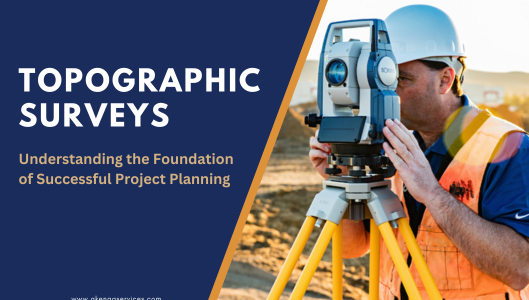



Topographic surveys form the bedrock of any successful construction or development project. By providing crucial insights into the lay of the land, these surveys empower project planners, architects, and engineers to make informed decisions, identify potential challenges, and design with precision. In this comprehensive guide, we will explore the significance of topographic surveys in pre-planning, the purpose they serve, the benefits of understanding topography, and the key advantages they offer. Let’s dive in and discover why topographic surveys are the key to planning your next project.
In the initial stages of any project, gathering accurate and comprehensive data is essential. This is where topographic surveys come into play. By mapping the physical features of a site, these surveys provide vital information about the terrain, natural and artificial structures, and elevation changes. Understanding the topography of the project site is crucial for assessing its feasibility, identifying potential challenges, and making well-informed design decisions.
The primary purpose of a topographic survey is to create a detailed and precise map of the land’s surface features. It goes beyond a standard land survey by capturing information about contours, elevations, and other critical elements of the terrain. The resulting topographic map serves as a valuable reference throughout the project’s lifecycle, guiding everything from initial concept design to construction and beyond.
Understanding topography offers several benefits in the planning and execution of projects. By analyzing the lay of the land, project stakeholders can visualize the site’s topographical features, including hills, valleys, bodies of water, and more. This insight enables them to plan infrastructure placement, drainage systems, and other aspects that contribute to a project’s success. Additionally, a thorough understanding of the topography helps in identifying potential environmental impacts and natural hazards, thus promoting safety and sustainability.
Topographical or topographic survey refers to the meticulous mapping and study of the surface features of a specific area. It involves measuring elevations, contours, and other landforms to create detailed representations of the terrain’s characteristics.
The term “topographic” refers to the physical features and characteristics of the land’s surface. It includes elevations, contours, landforms, and any other distinctive attributes that make up the site’s topography.
Topography is also known as the “lay of the land.” It encompasses the natural and artificial features that shape the Earth’s surface in a particular area. The study of topography provides valuable insights into the physical landscape and its various elements.
A topographic feature is any distinctive physical attribute found on the land’s surface. Examples of topographic features include mountains, valleys, ridges, lakes, rivers, cliffs, and plateaus.
An example of topography could be a hilly landscape with lush valleys and a winding river flowing through the region. Such features influence the site’s hydrology, environmental conditions, and overall aesthetics.
The survey used to study the topography of an entire country or large geographical region is known as a “National Topographic Survey” or “National Topographic Mapping.” This large-scale survey provides detailed information about the country’s terrain and is instrumental in various applications, including geographical research and infrastructure planning.
Topographical surveys offer several key benefits, including:
Topographic surveys are the backbone of effective project planning and development. By providing valuable insights into the lay of the land, these surveys enable informed decision-making, support safety measures, and promote sustainable projects. Understanding the terrain’s characteristics and topographical features empowers project stakeholders to navigate challenges and create successful, well-designed projects that stand the test of time.
Its like you read my mind! You seem to understand a lot about this, such as you wrote the e book in it or something. It is great blog.
An excellent read. I will certainly be back.